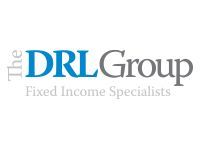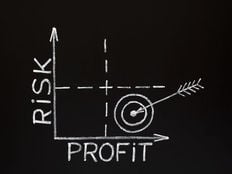
When most people think about building wealth, their minds go to stocks, real estate, or even private equity. But in today’s market environment – shaped by years of rate hikes, stubborn inflation, and market uncertainty – one asset class is quietly offering some of the best after-tax income opportunities we’ve seen in a generation: municipal bonds. Historically, municipal debt has long been favored by retirees and high-net-worth investors for their tax-free income and low default rates. But today’s yields are rewriting the narrative. Munis are no longer just a conservative investment option for capital; they are outperforming many taxable alternatives on an after-tax basis and doing so with far less risk.
In this article, we will examine how municipal debt yields are rivaling stocks and outperforming corporate bonds – without the volatility.
A Perfect Storm of Income Potential
Over the past three years, the U.S. Federal Reserve undertook one of the most aggressive interest rate hiking cycles in recent history, pushing the federal funds rate from near-zero levels in early 2022 to over 5% by mid-2024 – the highest it’s been in more than two decades. The goal was clear: break the cycle of persistent inflation that had taken hold following pandemic-era stimulus, supply chain disruptions, and tight labor markets. While these rate hikes successfully slowed inflation and cooled parts of the overheated economy, they also came with collateral damage. Mortgage rates soared, consumer borrowing costs rose sharply, and businesses faced tighter credit conditions.
However, for fixed-income investors – particularly those seeking long-term, tax-efficient income – this rate reset presented a rare and powerful opportunity. As interest rates rose, bond yields climbed in tandem, especially in the municipal bond market where rising yields translated into higher tax-free income for new buyers. Investors were suddenly able to purchase high-quality, investment-grade munis yielding 4% to 5% federally tax-free, levels not seen since before the 2008 financial crisis. For long-term, income-oriented investors, especially those in higher tax brackets, this shift created a favorable alignment: elevated, stable income with tax advantages, at a time when many other asset classes were facing uncertainty or volatility. In other words, what was painful for borrowers became a windfall for bond buyers, and particularly those entering the municipal space today.
As of mid-2025:
- Some long-term A-rated municipal bonds are yielding 4.5% to 5.0% – completely free of federal income tax.
- For investors in high tax brackets, this translates into taxable-equivalent yields (TEY) of 6.5% to over 8%.
- These are real, predictable, low-volatility returns that rival or beat equities – with none of the market whiplash.
Understanding the Tax-Equivalent Yield: The Metric That Matters
As many investors are aware, municipal bonds pay interest that is exempt from federal income taxes, and in many cases, state taxes as well. To compare their value fairly with taxable bonds or dividend-paying stocks, investors use the tax-equivalent yield (TEY).
Here’s the formula:
TEY = Tax-Free Yield ÷ (1 – Tax Rate)
For example: suppose you’re in the 35% federal tax bracket. A municipal bond yielding 4.80% tax-free has a TEY of:
4.80 ÷ (1 – 0.35) = 7.38%
That means you’d need a corporate bond yielding 7.38% just to match the after-tax return of that municipal investment. And here’s the kicker: Investment-grade corporate bonds today do not offer 7.38% – and if they do, they come with significant credit risk. According to wider market research, most A-rated corporate bonds yield between 5% and 5.5%, taxable. Hence, munis offer stock-like yields with government-grade risk and tax-free status. Below is a recent issuance by State of California and its coupon for understanding the relationship better:
5.00% California General Obligation Bond (2045)
Let’s put this into context with a real bond from the current market:
- Issuer: State of California (General Obligation)
- Coupon: 5.00%
- Maturity: 2045
- Price: $102.50 (premium)
- Tax-Free Yield to Maturity: 4.80%
If you’re a high earner in a 35% federal bracket:
- Your TEY = 4.80 / (1 – 0.35) = 7.38%
This is state-backed debt, considered one of the lowest-risk municipal instruments. And yet it delivers equity-like after-tax returns. That’s not just attractive — that’s historic.
What Makes the Aforementioned a Generational Opportunity?
When examining the historical trends of municipal debt yields and their availability, we haven’t seen the current level of yields and this kind of yield spread versus Treasuries and corporates in nearly two decades, for context and historical review, in 2021, the average municipal yield was around 1.5%, and today, it ranges from 3% to 5%, depending on credit quality and maturity. Furthermore, as mentioned, stock markets are volatile, dividend yields are compressed, and taxable bond yields are barely keeping up with inflation after taxes.
It’s also imperative to note that If the Federal Reserve begins cutting rates in late 2025 or 2026, today’s Muni yields will disappear. Bond prices will likely rise – this means that for investors that can lock in higher coupons will also benefit from the reduction in interest rate in generating premium due to the inverse relationship between market interest rate and the bond prices. As interest rates decrease, bond prices in the market appreciate, and vice versa. The current times may be similar to the early 1980s when 10-year Treasuries yielded 15%. Some savvy investors weren’t chasing growth stocks, but rather locking in guaranteed, high income in their fixed-income portfolios.
Who Should Be Looking at Munis?
Municipal bonds aren’t just for the ultra-wealthy anymore. These investments can be a smart option for anyone in a moderate-to-high tax bracket – generally those paying 22% or more in federal income tax. They’re especially appealing to people who are already in retirement or planning for it, those who value predictable and stable income, individuals looking to reduce their taxable income, and anyone wanting a buffer against stock market volatility.
They’re also an excellent choice for residents of high-tax states, such as California, New York, or New Jersey, where in-state municipal bonds may offer the benefit of being triple tax-free (federal, state, and local).
How to Get Started
There are three primary ways to invest in municipal bonds:
First, you can purchase individual bonds directly through major brokerage platforms like Schwab, Fidelity, or TD Ameritrade. This approach enables you to build a laddered bond portfolio, spreading out the maturity dates to manage interest rate risk over time.
Second, for smaller investors or those looking for simplicity, municipal bond mutual funds and ETFs are a great option. Some popular choices include the Vanguard Intermediate-Term Tax-Exempt Fund (VWITX), which offers a yield of around 3.3%, the iShares National Muni Bond ETF (MUB) with a yield close to 3.5%, and the Nuveen High-Yield Muni Fund (NHMAX), which yields around 5.8%.
Lastly, you can work with a specialist. Advisory firms, such as Raymond James, offer professionally managed municipal bond portfolios. These specialists can incorporate strategies such as tax-loss harvesting and customized cash flow planning, which can be particularly beneficial for high-net-worth individuals or retirees with more complex financial needs.
The Bottom Line: Don’t Sleep on Tax-Free Income
In today’s environment of economic uncertainty, rising taxes, and volatile markets, municipal bonds are having a resurgence. They offer a rare blend of tax-efficient income, strong credit quality, and relative safety. With elevated tax-free yields, attractive taxable-equivalent returns, and the possibility of a rate-cutting cycle on the horizon, now may be one of the best times in decades to consider adding municipal bonds to your portfolio.
If you’re focused on building long-term wealth or looking for stable income in retirement, this could be a once-in-a-generation opportunity to take advantage of what municipal bonds have to offer.
Disclaimer: The opinions and statements expressed in this article are for informational purposes only and are not intended to provide investment advice or guidance in any way and do not represent a solicitation to buy, sell or hold any of the securities mentioned. Opinions and statements expressed reflect only the view or judgment of the author(s) at the time of publication and are subject to change without notice. Information has been derived from sources deemed to be reliable, the reliability of which is not guaranteed. Readers are encouraged to obtain official statements and other disclosure documents on their own and/or to consult with their investment professionals and advisors before making any investment decisions.






